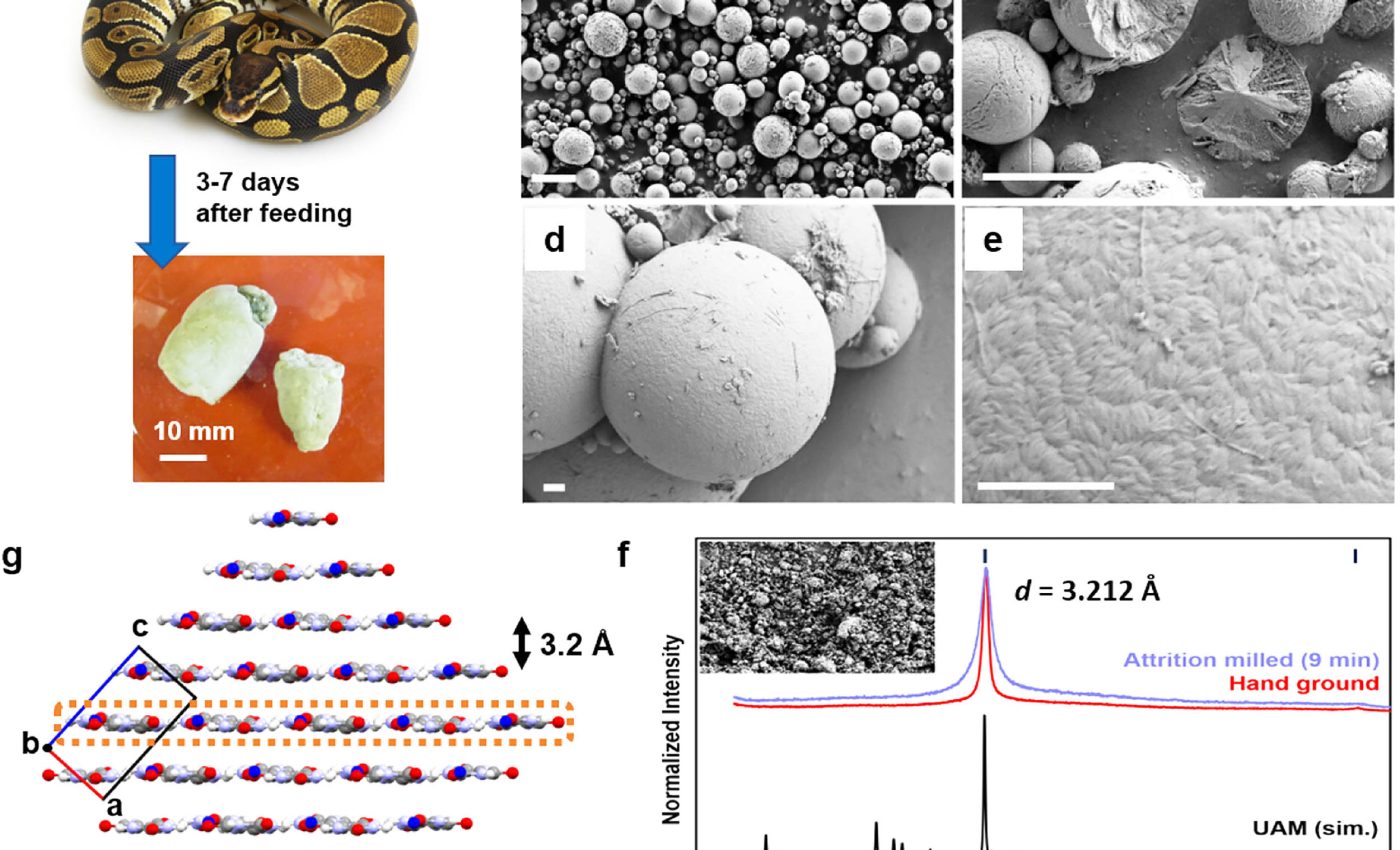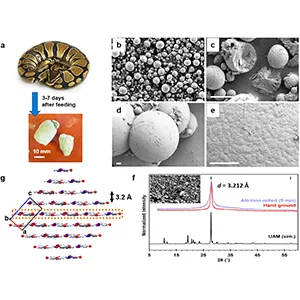
Reptiles don't urinate like humans, they 'pee' tiny crystals
Here’s a new fun fact for you: reptiles don’t urinate like people and other mammals. A new study reports that reptiles’ solid waste pellets are packed with microscopic crystals spheres made mostly of uric acid.
The team examined samples from more than 20 species. They found the same tiny design, from pythons to boas, all produced as part of a single waste stream.
Reptiles and crystal pee
Lead scientist Jennifer A. Swift of Georgetown University and colleagues analyzed the solids using microscopes and X-ray tools. The work focused on pythons, boas, and several other reptiles.
They saw spheres about 1 to 10 micrometers wide, roughly 0.00004 to 0.0004 inches, arranged in dense, chalky pellets. The spheres are built from nanocrystals, crystals only tens of nanometers across.
“This research was really inspired by a desire to understand the ways reptiles are able to excrete this material safely, in the hopes it might inspire new approaches to disease prevention and treatment,” said Swift.
X-ray patterns showed a dominant spacing that fits uric acid with a single water molecule tucked in the structure.
Earlier work showed that many modern snakes leave a powdery mix rich in ammonium urate, while ancient lineages leave rock hard pellets. The new chemistry bridges those observations into one process.
Crystals help reptiles survive
Many land reptiles conserve fluids by excreting urates, solid pellets of concentrated nitrogen waste. Pushing solids instead of liquid urine helps hold onto water in hot or dry places.
Surface rich spheres create a lot of contact area for metals and salts. That design lets the animal park small amounts of sodium, potassium, and other ions into the waste without flushing much water.
The team also saw that the spheres dissolve more readily than other uric acid forms. In their tests, the spheres were about 20 to 40 times more soluble than the stubborn crystals common in gout and stones.
That water thrift has a clear payoff in deserts and savannas. Even a small edge in fluid retention can separate survival from stress during long gaps between meals.
How waste removes toxins
The researchers propose a protective twist. Ammonia is a toxin at high levels, and snakes make plenty of it while digesting protein.
They showed that the spheres react with ammonia solutions to form hard grains of ammonium urate. In simple terms, the spheres seem to mop up free ammonia by locking it into a solid that can be carried away safely.
That dual role could explain why some species void mostly spheres while others void grains. The balance likely reflects the amount of ammonia the animal needs to neutralize after a meal.
As a test, the team soaked the spheres in ammonium hydroxide and watched them turn granular. Spectroscopy and X-ray data confirmed the change, linking the lab reaction to the granular wastes from modern snakes.
Link to human health
In people, gout flares when urate crystals build up in joints and trigger painful inflammation. Those crystals are monosodium urate, the uric acid salt found in gout.
Uric acid also contributes to kidney stones when urine becomes too acidic. Understanding how spheres stay movable and non damaging in reptiles could inform new strategies to prevent deposits in the urinary tract.
Humans and other apes lost uricase, an enzyme that breaks down uric acid, millions of years ago. Researchers still debate why, but one idea is that low background uric acid may have offered benefits such as antioxidant protection.
The new model hints at one more possibility. Small amounts of soluble uric acid might sometimes help trap ammonia before it can irritate tissues, though tests in people would be required.
Structure of reptiles pee crystals
At the nanoscale, the crystals stack in thin layers that are slightly misaligned. That arrangement creates a single dominant X-ray signature and helps explain the high surface area.
The spheres’ outer surfaces carry a faint negative charge in neutral fluids. That feature likely attracts positively charged ions, a simple way to manage salts without complex pumps.
With time, the spheres can transform into less soluble crystals at the pellet surface. The interior stays spherical longer, which hints at a slow, outward in aging process controlled by moisture.
Laboratory aging sped up the change in air and in water. The shell reacted first, while the core lagged, a pattern that suggests exposure controls which forms appear.

More questions need answers
How and where the body assembles these spheres remains unknown? The uniform crystal fragments suggest one early step, and the varied sphere sizes point to a second packaging step.
Do similar spheres form in birds during waste handling? That is likely, given related physiology and older microscopy reports, but careful work across species is still needed.
Could designers mimic this crystal packing to make safer drug carriers? The materials behave predictably in water, which could make them useful as temporary scaffolds for medical chemistry.
For now, the biggest advance is simply recognizing the shared playbook. Reptiles appear to start with the same sphere and then tune the final product to match diet and habitat.
The study is published in the Journal of the American Chemical Society.
—–
Like what you read? Subscribe to our newsletter for engaging articles, exclusive content, and the latest updates.
Check us out on EarthSnap, a free app brought to you by Eric Ralls and Earth.com.
—–













